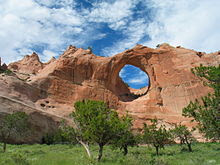“Glen and Bessie Hyde were newlyweds who disappeared while attempting to run the rapids of the Colorado River through Grand Canyon, Arizona in 1928. Had they succeeded, Bessie would have been the first documented woman in history to do so.” (Wikipedia) Glen Rollin Hyde was born on December 9, 1898 in Twin Falls, Idaho. He was a farmer and on occasions would go river rafting on the Salmon and Snake Rivers in Idaho. While traveling on a passenger ship to California in 1927, he met Bessie. Bessie Louise Haley was born on December 29, 1905 in West Virginia. She was an art student, worked in a bookstore and loved to write poetry. When they met, Bessie was still married to her first husband. The day after her divorce was final, April 12, 1928, the two got married. Even though Bessie had never done any river rafting and Glen was a semi-pro at it, he wanted them to spend their honeymoon traveling down the Colorado River inside the G...








